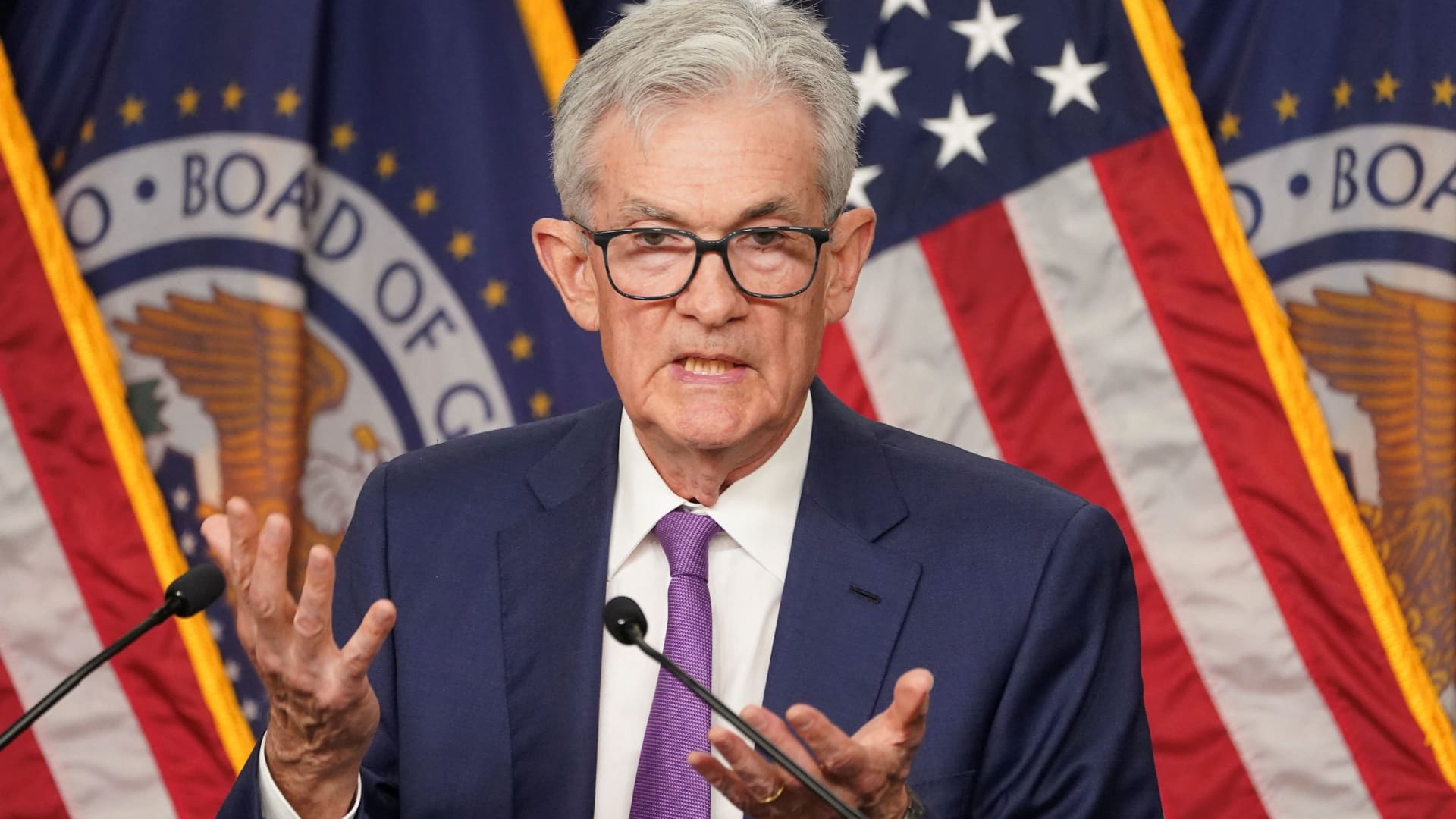The Federal Reserve left its key interest rate unchanged on Wednesday and signaled that only one rate cut is expected by the end of the year.
As markets hoped for looser monetary policy from the central bank, policymakers at the Federal Open Market Committee took two of the three interest rate cuts announced in March off the table after their two-day meeting. The committee also indicated that it believes the long-term interest rate is higher than previously assumed.
New forecasts released after this week’s two-day meeting suggest slight optimism that inflation remains on track to return to the Fed’s 2 percent target, allowing for some monetary easing later this year.
“Inflation fell last year but remains elevated,” said the statement after the meeting, echoing the language of the last statement. The only significant change in the new statement was: “In recent months there has been modest further progress toward the Committee’s inflation target of 2 percent.”
The previous statement said there had been a “lack of further progress” on inflation.
Traders appeared encouraged by the comments, and the S&P 500 jumped to a record high on Wednesday after the statement was released.
An aggressive cut can be observed for 2025
For the period up to 2025, the committee now expects a total of five cuts, equivalent to 1.25 percentage points, compared to six in March. If the forecasts are correct, the key interest rate would remain at 4.1% until the end of next year.
Another significant development came in the forecast of the long-term interest rate, which essentially represents a level that neither stimulates nor slows down growth. The reading rose to 2.8% from 2.6%, an indication that the narrative of a longer-term increase is gaining traction among Fed officials.
Another indication of a hawkish stance from central bankers is that in the dot plot, four officials were in favor of no cuts this year, up from two previously.
Return to the 2% target
Elsewhere in the FOMC’s summary of economic forecasts, participants raised their 2024 inflation outlook to 2.6% and 2.8% excluding food and energy, respectively. Both inflation forecasts were 0.2 percentage points higher than in March.
The Fed’s preferred inflation indicator is the Commerce Department’s Personal Consumption Expenditures Price Index, which showed readings of 2.7% and 2.8%, respectively, in April. The Fed is more focused on core inflation as a better long-term indicator. The SEP expects inflation to return to the 2% target, but not before 2026.
The decision and informal forecasts from the 19 meeting participants come amid a volatile year for markets and investors’ hopes that the Fed would begin easing after raising interest rates to their highest level in about 23 years.
The federal funds rate, which sets the overnight cost of funds for banks but is factored into many consumer lending products, is expected to be in a range between 5.25% and 5.50%, the result of 11 rate hikes between March 2022 and July 2023.
Earlier in the day, as Fed officials prepared their economic and interest rate outlook, the Bureau of Labor Statistics released the consumer price index for May. The report showed that inflation remained unchanged for the month, while the annual rate fell slightly to 3.3% compared to April.
During a press conference, Powell said that the report was better than almost everyone expected and that it factored into the FOMC’s decision.
“We view today’s report as progress and, as you know, confidence building,” Powell said. “But we don’t think we have the confidence to justify starting to relax the policy at this point.”
Inflation remains well above the Fed’s 2 percent target, but is also well below its peak of just over 9 percent nearly two years ago. Core values excluding food and energy prices were 0.2% from the previous month and 3.4% from the same period last year.
In the first quarter of 2024, economic data weakened compared to most of the previous year, with GDP increasing by just 1.3% on an annual basis. Data for April and May were mixed, but the Atlanta Fed forecast GDP growth of 3.1%, a solid pace, especially given the ongoing recession worries that have weighed on the economy over the past two years.
However, inflation data was equally robust, posing problems for central bankers.
The year began with markets expecting a sharp pace of rate cuts, but that was thwarted by stubborn inflation and statements from Fed officials that they were not convinced inflation was convincingly returning to target.
“This is a Fed meeting that is nothing special. They know conditions are improving, but they don’t need to rush into rate cuts,” said David Russell, global head of market strategy at TradeStation. “The strong economy allows Jerome Powell to push inflation out of the system without hurting jobs. Goldilocks is on the horizon, but policymakers don’t want to jinx it.”
Don’t miss these exclusives from CNBC PRO
Source link
2024-06-12 18:58:57
www.cnbc.com
















